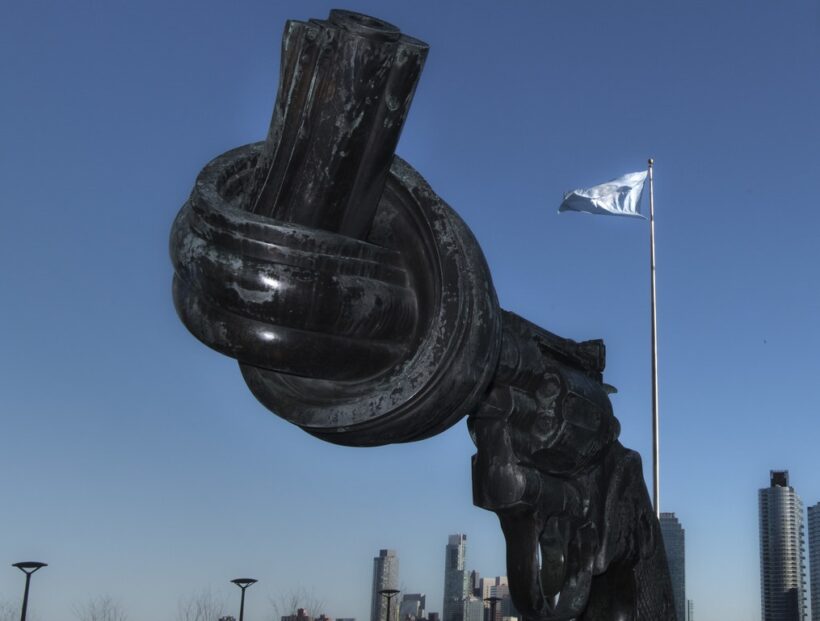Ten years have passed since, in an article for April 25, I wrote that today liberation is called disarmament and resistance is called nonviolence – a formula that on April 25 of the following year would become the slogan of the great national pacifist demonstration at the Arena di Verona, from which the campaign “ Another defense is possible” was launched – yet in a decade there has been such precipitation of things that what was then hope becomes today an urgent need.
In 2013, the annual report of SIPRI, the authoritative international research institute in Stockholm, signaled an already worrying growth in global military spending to over 1,700 billion dollars; according to the report released yesterday, with a jump of over 500 billion in just ten years and 127 compared to the previous year (+ 3.7%), in 2022 [the world military expenditures] have reached the new record figure of 2,240 billion dollars. In Italy, at the time 24 billion euros were spent on armaments, today the Observatory on Italian military expenditure documents that we are approaching 27 billion euros, which within a few years will become almost 40 with the increase to 2% of GDP, as desired by NATO and voted a year ago by the Italian Parliament. [These are] national and global resources subtracted from civil, social and environmental investments, necessary to face the global systemic crisis that generates those conflicts which, instead, these very weapons transform into wars.
Ten years later, a new fratricidal war flares up in Europe, exploding since 2014 in the Ukrainian Donbass region and internationalized in 2022, with Russian invasion on the one hand and NATO’s armed support for Ukraine on the other, in a process of escalation that includes no possibility of a “ceasefire” but irresponsible rhetoric of impossible “victory” on both sides. Instead of a search for mediation and peace, just and sustainable for all, that would preserve the Ukrainian people, first and foremost, and the rest of Europe later from a catastrophic nuclear outcome. Pure, incredibly, repeatedly threatened.
Moreover, an extreme right-wing government has taken power in Italy and – after a few months of pounding the country’s cultural counter-reform – the second highest office of the state, Senate President Ignazio La Russa, in an interview with Repubblica a few days before Liberation Day, declared that “there is no reference to anti-fascism in the Constitution.” Without understanding – but he is not the only one and not only on the right – that beyond the Twelfth Transitory and Final Rule, which prohibits the reconstruction of the fascist party, it is the “Fundamental Principles” that ground (precisely) the Constitution’s antifascism. Beginning precisely with Article 11, which, with the “repudiation of war” rejects – with disgust and disgrace – bellicism and militarism, the primary identity elements of fascism. Thus operating a cultural and political revolution that ushers in an antithetical weltanschauung (translator’s note: weltanschauung denotes a particular view of life or philosophy), worldview, compared to the fascist one and related domestic and international relations. Something not yet sufficiently brought into focus in its consequences, as, moreover, Aldo Capitini, the Italian philosopher of nonviolence, also recalled in 1968: “the rejection of war and its preparation is the precondition for talking about a different orientation.”
Finally, as of this year, thanks to the Sereno Regis Study Center of Turin and the publisher Sonda, it is possible to read in Italian the outcome of the important research by U.S. political scientist Erica Chenoweth (How to Resolve Conflict. Without Weapons and Without Hate with Civil Resistance), conducted with Maria Stephan, which shows that in the past 120 years of struggle campaigns – violent and nonviolent – around the world, more than 50 percent of civil and nonviolent resistances have been successful versus only 26 percent of those that have resorted to violence. This is analytical documentation that civil and nonviolent resistance, Chenoweth explains, “is a realistic and more effective alternative to violent resistance in most contexts. Civil resistance has nothing to do with being nice or polite, but refers to resistance rooted in community action. It means rebelling and building new alternatives through the use of methods that are more inclusive and effective than violence.”
For all these reasons it is necessary to reiterate again, more than ever, that today liberation is called disarmament and resistance is called nonviolence. Everyone’s survival now depends on it.










